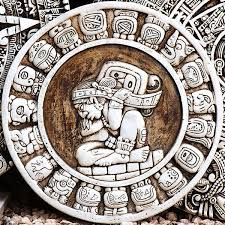The Mayan civilization, known for its architectural marvels and intricate art, also made incredible advancements in astronomy and timekeeping. At the heart of their celestial understanding was the Mayan calendar, a system so precise and sophisticated that it continues to intrigue scholars, historians, and enthusiasts worldwide.

The Mystery Behind the Mayan Calendar
Why is the Mayan calendar so captivating? It’s not just its mathematical brilliance but also the cultural and spiritual significance it holds. The calendar wasn’t just a way to track days; it was a lens through which the Maya understood the universe, their place in it, and their destiny.
The Foundations of the Mayan Calendar
A Dual Timekeeping System
The Mayan calendar wasn’t a single entity. It was a combination of two interlocking systems: the Tzolk’in and the Haab. The Tzolk’in was a 260-day ritual calendar, while the Haab was a 365-day solar calendar. Together, they formed a Calendar Round, a 52-year cycle crucial to Mayan life.
Mathematics in Mayan Timekeeping
The Maya used a vigesimal (base-20) system for their calculations. This unique approach allowed them to create complex and accurate timekeeping methods. They even accounted for leap years, ensuring their calendar remained aligned with astronomical phenomena.
Understanding the Tzolk’in
The Sacred Cycle
The Tzolk’in consisted of 20 day-names combined with 13 numbers, creating a 260-day cycle. This wasn’t arbitrary; it reflected the human gestation period and spiritual cycles. Each day had its deity and significance, influencing decisions from agriculture to warfare.
A Guiding Force for Life
The Tzolk’in was more than a calendar; it was a spiritual guide. Priests and shamans used it to determine auspicious days for ceremonies, crop planting, and other critical activities. It was believed to be a divine roadmap for human and cosmic harmony.
The Troubling Legacy of Colonial Education: Erasure and Cultural Suppression
H3: The Haab: A Solar Reflection
H4: Structure of the Haab
The Haab comprised 18 months of 20 days each, followed by a short month of five days called Wayeb. These five days were considered unlucky and filled with rituals to ward off misfortune.
Synchronizing with the Sun
The Haab’s alignment with the solar year underscores the Maya’s advanced understanding of astronomy. They meticulously observed celestial events, ensuring their agricultural practices thrived in harmony with the seasons.
The Long Count: Tracking Eternity
Beyond the Calendar Round
While the Tzolk’in and Haab formed a 52-year cycle, the Maya needed a system to record historical and mythological dates spanning millennia. Enter the Long Count, a linear calendar tracking time from a mythical creation date—August 11, 3114 BCE.
Decoding Long Count Dates
The Long Count used a series of units: kin (days), winal (20 days), tun (360 days), katun (7,200 days), and baktun (144,000 days). By stacking these units, the Maya could mark dates far into the past or future with remarkable accuracy.
Astronomy and the Mayan Calendar
Observing the Heavens
The Maya’s fascination with the sky wasn’t just cultural; it was scientific. They constructed observatories and tracked the movements of celestial bodies like Venus, the Moon, and the Sun.
Alignments and Predictions
Mayan temples often aligned with astronomical events. For example, at Chichén Itzá, the pyramid of El Castillo casts a serpent-shaped shadow during the equinoxes. These alignments reflected the Maya’s integration of astronomy into their architecture and calendar.
The 2012 Phenomenon: Myth and Reality
The End of the World?
When the Long Count reached its 13th baktun on December 21, 2012, many believed it predicted an apocalypse. However, this was a misunderstanding. For the Maya, this date marked the end of one cycle and the beginning of another.
A New Era
Rather than an end, 2012 symbolized renewal. The Maya saw time as cyclical, and the conclusion of one cycle was an opportunity for reflection and growth.
Cultural Significance of the Mayan Calendar
A Spiritual Framework
The calendar wasn’t just practical; it was deeply spiritual. It connected the Maya to their gods, nature, and ancestors, guiding rituals and shaping their worldview.
A Legacy of Knowledge
Even today, the Mayan calendar influences modern Mayan communities. It’s a testament to their ancestors’ wisdom and their enduring connection to their heritage.
Lessons from the Mayan Calendar
Harmony with Nature
The Maya’s timekeeping reflected their respect for natural cycles. By aligning their lives with celestial rhythms, they cultivated harmony with their environment.
The Power of Observation
The precision of the Mayan calendar reminds us of the importance of observation and curiosity. It’s a call to look up, ask questions, and seek understanding.
Conclusion
The Mayan calendar is more than an ancient artifact; it’s a window into a civilization’s soul. Its complexity, accuracy, and cultural depth reveal the Maya’s brilliance and their profound connection to the cosmos. As we explore its mysteries, we’re reminded of humanity’s eternal quest to make sense of the universe.
Unearthing Forgotten Spiritual Practices: Zoroastrianism to Shintoism
FAQs
What is the difference between the Tzolk’in and the Haab?
The Tzolk’in is a 260-day ritual calendar, while the Haab is a 365-day solar calendar. Together, they form the Calendar Round, a 52-year cycle used by the Maya.
How did the Maya use the Long Count?
The Long Count allowed the Maya to record dates spanning thousands of years, starting from a mythical creation date in 3114 BCE.
Did the Mayan calendar predict the end of the world?
No, the 2012 date marked the end of a cycle in the Long Count, symbolizing renewal rather than an apocalypse.
What role did astronomy play in the Mayan calendar?
Astronomy was integral to the calendar, guiding its structure and aligning it with celestial events like solstices and eclipses.
Is the Mayan calendar still used today?
Yes, some modern Mayan communities continue to use the calendar for cultural and spiritual purposes, preserving its legacy.


